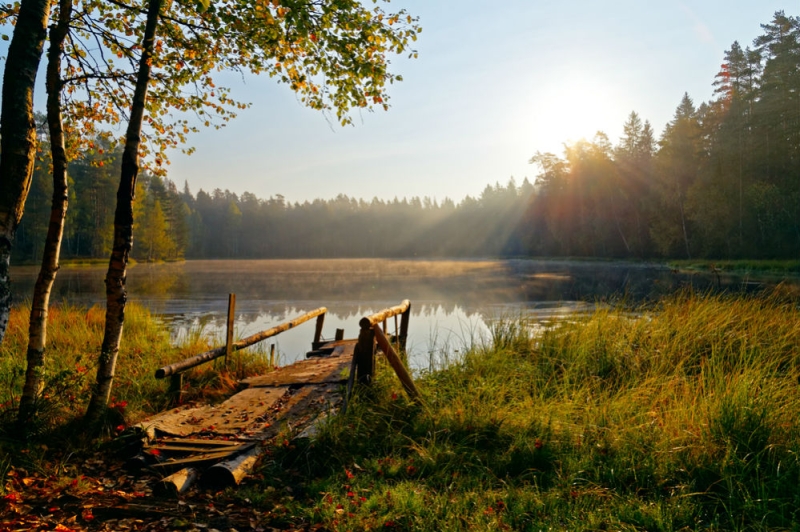
You can have an active weekend or a vacation in nature in protected areas of our country without deprivation and extreme conditions. It is not necessary to have survival skills, have special equipment, live in a tent and carry a heavy backpack. Our country has many national parks and reserves with stunning nature and conditions accessible to any healthy person. Feel the hiking atmosphere, disconnect from the bustle of the city, see unique natural phenomena, without depriving yourself of minimal comfort. We have prepared a short guide to five physically and financially accessible national parks in our country, where you can stay not only in tents, but also in guest houses.
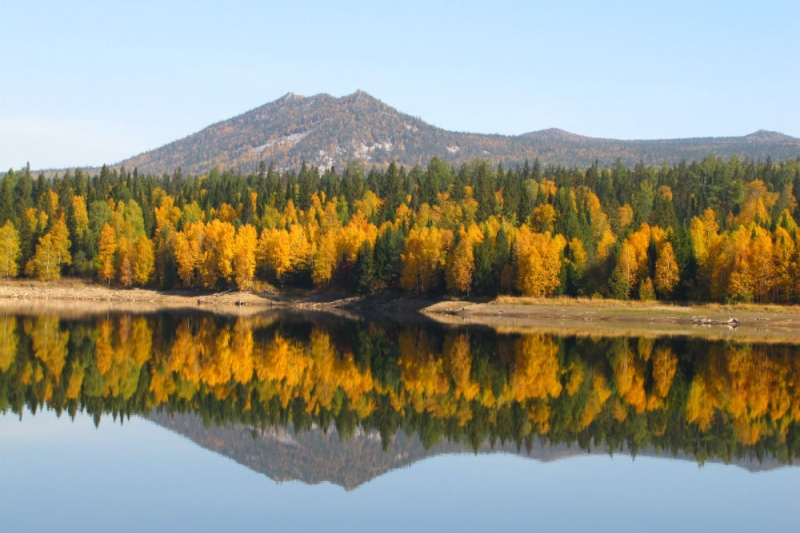
1. National Park “Taganay” in the Chelyabinsk region
Taganay is located next to the ancient Ural city of Zlatoust. This is one of the most popular, developed and accessible national parks in the Southern Urals. Unique natural attractions are compactly collected in a relatively small area of the park.
The upper trail – the most popular route – passes through almost all interesting points: the “Double-Headed Hill” mountain, from which a view of Chrysostom opens, the “Response Ridge” rock, which looks like a giant frozen stone tsunami, the “Kruglitsa” mountain, made of large stone blocks – Kurumnikov. Along the route there are cordons and guest houses – huts with stoves and wooden beds. There is a bathhouse at each cordon.
Those who wish can walk to the most remote shelter of the park – the Taganay Gora weather station. The reward will be a stunning view from the high plateau. You can spend the night in the weather station building itself, where park employees live and work.
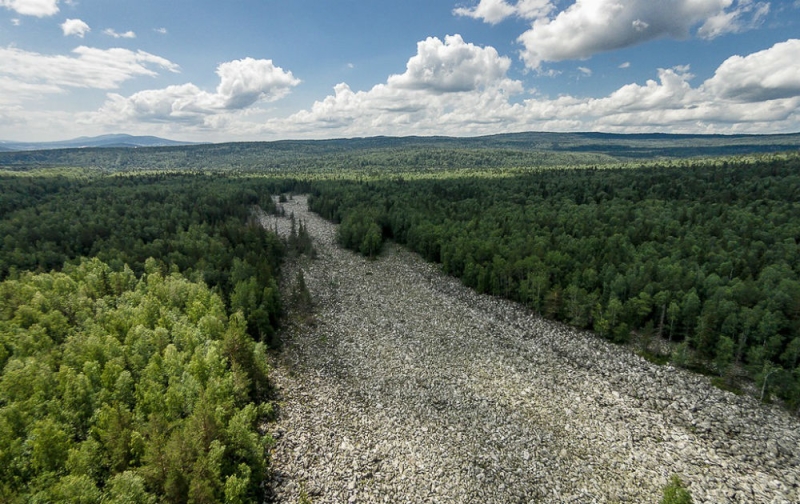
An amazing natural phenomenon in Taganay – a stone river. Large boulders seemed to have once “flowed down” from the mountain slopes in streams, merged below into a single channel and froze. It is believed that this is the largest stone placer in the world. Its length reaches six kilometers, and its width in some places reaches 500 meters. You can get close to the stone river on the Lower Path. Near the river, it’s worth stopping and listening – streams are babbling under the huge boulders.
If you are not ready to walk the routes on your own, use the services of park guides. You will be offered ready-made tracks for one or several days.
Upon arrival at the park, you need to register at the Central Estate, get advice from the staff and pay for entry.
Address: Chelyabinsk region, city of Zlatoust.
Cost:
entrance to the park – 100 rubles
accommodation in huts – from 200 to 400 rubles per day per person
Site: taganay.org
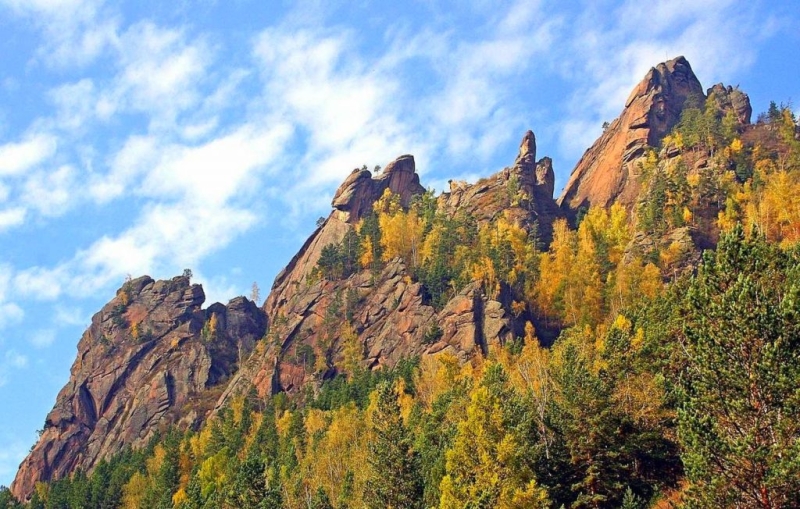
2. Reserve “Stolby” in the Krasnoyarsk Territory
The reserve received its name due to the majestic syenite rocks scattered throughout its territory. Over many years, under the influence of the winds, they took the form of gigantic giants. In some pillars one can guess the outlines of people or animals, hence their names: “Granddaughter”, “Grandma”, “Grandfather”, “Manskaya Baba”, “Mongol”, “Small Golden Eagle”, “Tsypa”, “Elephant” and others. There are more than 100 pillars in the reserve. Many of them are associated with interesting legends and stories. The most popular is dedicated to the events of the beginning of the last century. Before the revolution of 1917, the Bolsheviks wrote the word “Freedom” on the largest rock, the Second Pillar. The guardians of the law tried to erase it, but were unable to climb the pole. The inscription is still displayed today – local enthusiasts periodically update it.
All the pillars have bizarre shapes, many passages and holes, so don’t be surprised by the large number of climbers and climbers. Watching them climb is one of the fun things to do in the park. And some pillars, for example the First one, can be climbed by anyone. A gentle slope leads to the top.
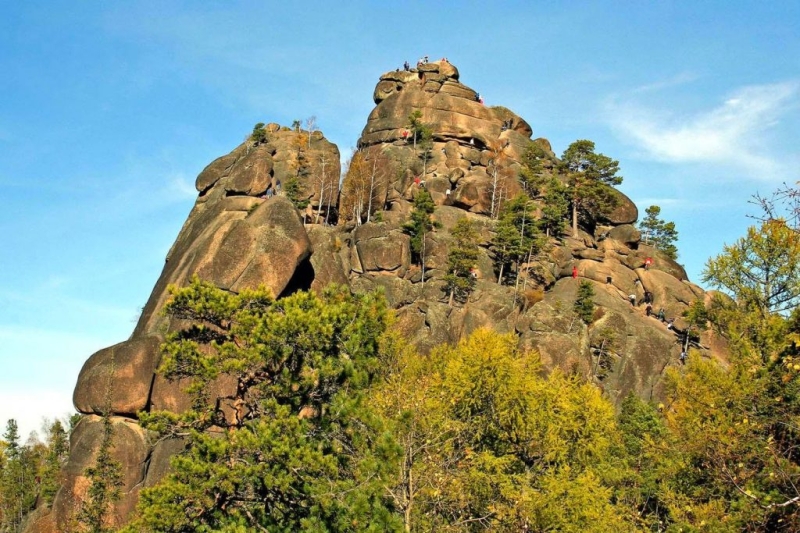
There is a cable car in the reserve. You can use it to climb the Takmak rocky area from the Bobrovy Log recreation center. From here you can see the mighty Yenisei and Krasnoyarsk located on its banks.
The park has several eco-trails that will take you to the most interesting places. You can stay right in the reserve in guest houses or in a tourist hostel on the territory of the Narym scientific and educational complex or in Krasnoyarsk itself. City public transport runs regularly from the city to the reserve.
Address: Krasnoyarsk region, Krasnoyarsk city.
Cost:
entrance to the national park – 50 rubles
night in a hostel/hotel – from 550 rubles per person
Site: zapovednik-stolby.ru
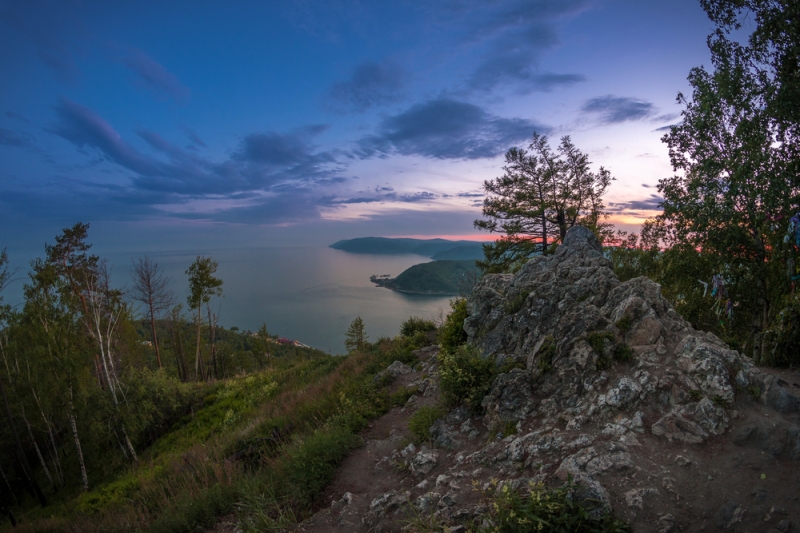
3. Pribaikalsky National Park in the Irkutsk region
There are several large national parks located on the shores of Lake Baikal. Each of them is interesting, but it is on the territory of the Pribaikalsky National Park that the famous shamanic island of Olkhon and a unique monument of engineering art are located – the Circum-Baikal Railway. It’s worth going to see the “Bird Bazaar” cliff – the only place on Baikal where herring gulls nest on steep cliffs. Another interesting attraction is petroglyphs – rock paintings of people who lived in the Bronze and Iron Ages. In the summer, in the park you can ride horses, go on a boat cruise, and in winter, snowmobiles, dog sleds and ski slopes are at your disposal.
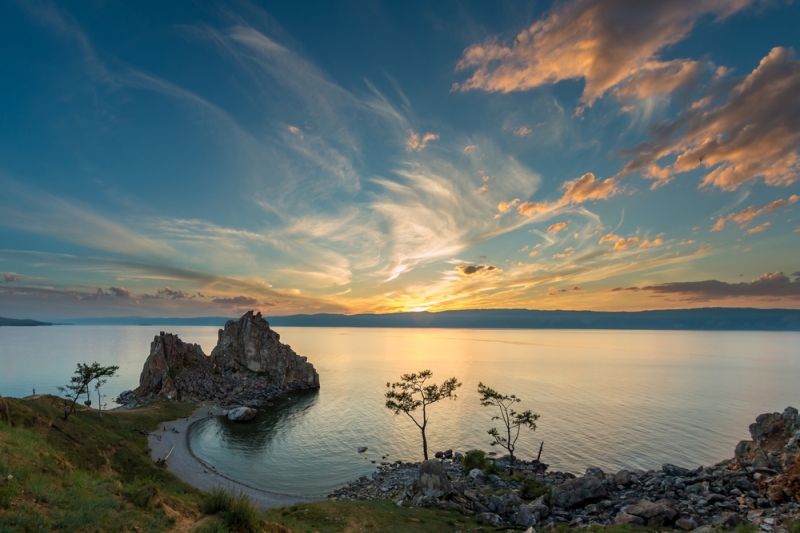
Olkhon Island
The park has many walking routes of varying difficulty levels. The most popular is the section of the Great Baikal Trail from the village of Listvyanka to the village of Bolshoye Goloustnoye. The entire route is 60 kilometers, but it can be divided into shorter sections and choose the most interesting one for yourself. There are cordons and villages along the trail where you can stop for the night and go to the bathhouse. At the cordon “Chernaya Pad” there is a real yurt for overnight stay. Along the trail you will admire the landscapes of Baikal, rocks, streams, and if you are lucky, you will see a Baikal seal resting on the coastal stones. Part of the route passes through the area where gold was mined in the 19th–20th centuries.
Until the end of October 2017, an eco-trail to Cape Khoboy, the northernmost point of the island, will appear on Olkhon Island.
To visit the national park you must obtain permission from the main office of the reserve in Irkutsk or from the forest districts in the park.
Address: Irkutsk region, Irkutsk.
Cost:
entrance — 100 rubles
accommodation in guest houses and tourist shelters – from 300 rubles per day per person.

4. Lazovsky Nature Reserve in Primorsky Territory
The Lazovsky Nature Reserve is located on the slopes of the Sikhote-Alin ridge and is washed on one side by the waters of the Sea of Japan. On the territory of the reserve there are several simple eco-trails leading to the main attractions and the sea coast. You will see the seaside taiga, trees entwined with vines, climb low mountains, admire waterfalls and rocky outcrops. On the sea coast, you may come across traces of the Amur tiger. Excursions are accompanied by park staff and take no more than one day. Guest houses welcome tourists along routes and in bays.
The most popular bays are Proselochnaya and Petrova. Here you can stay in houses or camping camps, take a shower, bath, and have lunch at wooden tables overlooking the Sea of Japan.
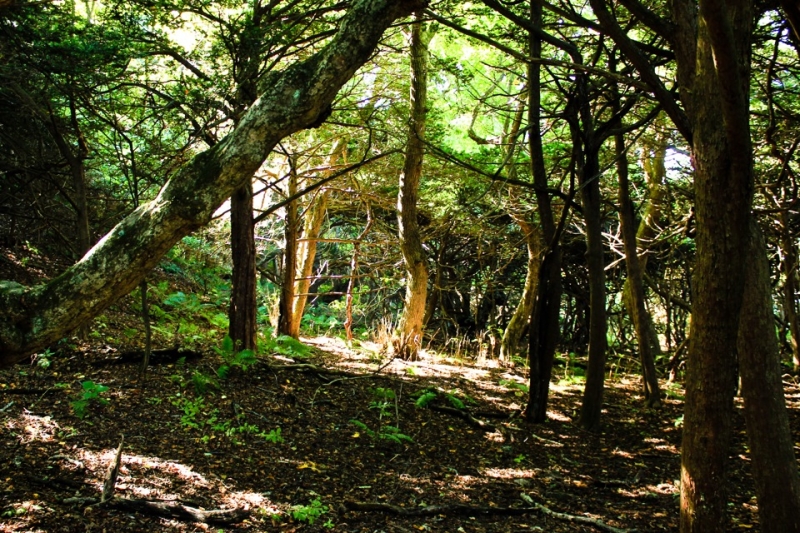
Photo: Roman Tutukin
From Petrov Bay we go to Petrov Island to see the main attraction of the reserve – a unique yew grove. You will walk along an eco-trail under the arches of intertwined, curved and twisted branches of relict trees, some of which are 200-300 years old. Residents of the Primorsky Territory believe in the legend that yew trees were planted by the Bohai tribe, which lived on the island several thousand years ago.
To visit the park, you must obtain permission from the park administration in the village of Lazo and book accommodation in advance.
Address: Primorsky region, Lazovsky district, Lazo village
Cost:
pass to the park – 300 rubles
accommodation – from 500 rubles per day
Site: lazovzap.ru
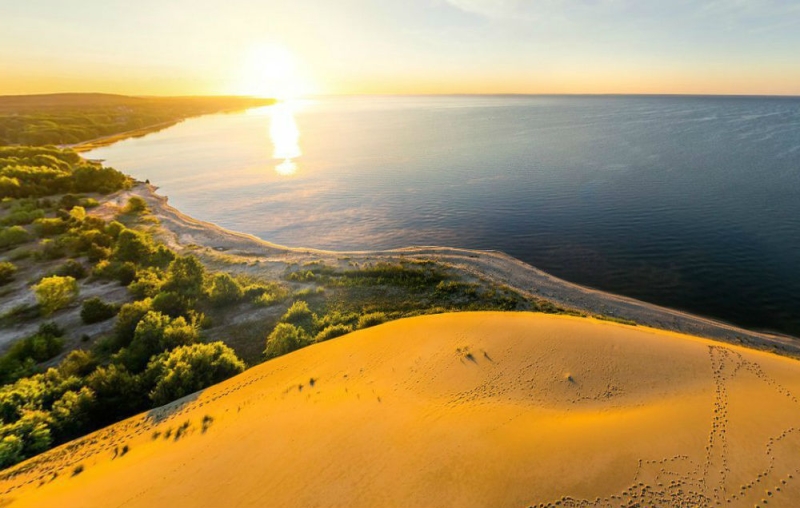
5. National Park “Curonian Spit” in the Kaliningrad region
The Curonian Spit is a long and narrow sandy peninsula between the Baltic Sea and the freshwater Curonian Lagoon. The 98-kilometer-long spit stretches from Russian Zelenogradsk to Lithuanian Klaipeda.
Ecotourism is well developed in the national park; many wooden trails have been laid to preserve the natural relief of the sand dunes. The administration has developed several walking routes. You can explore them on your own or with a guide. For independent tourists there is an application for a smartphone – a personal guide to the Curonian Spit. You can download it here. You can also get information at the Museum Complex visitor center.
The most popular route is the Efa Heights ecological trail, 2.8 kilometers long. Here is one of the highest dunes in Europe – the Nut Dune. The highest point of which is 55 meters. It is this height that is called the Ef height in honor of the dune inspector Franz Ef, who studied and strengthened the shifting sands.
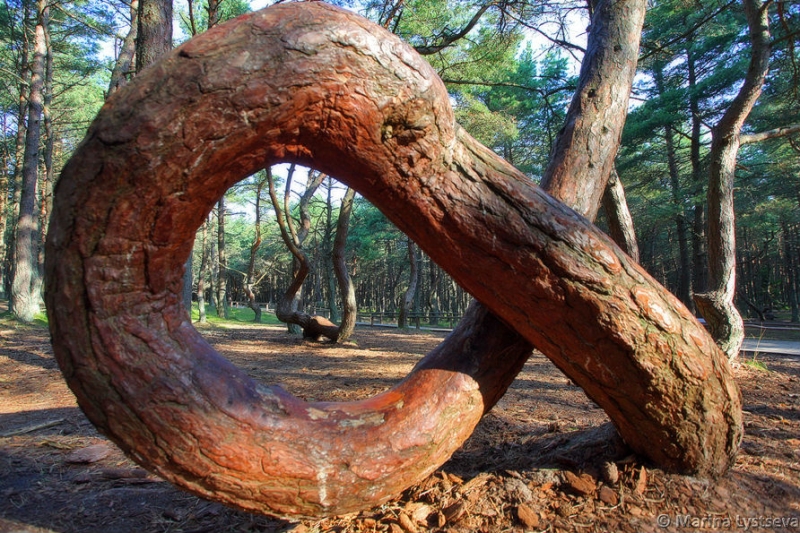
Another popular trail leads to the Dancing Forest. The trunks of coniferous trees, blown by the Baltic winds, cunningly bent into various shapes. There is a legend among local residents – if you climb into the ring formed by a tree trunk, you will be cured of all diseases. Unfortunately, this belief has led to trees twisted into circles standing with their bark stripped off.
You can stay overnight in the villages of Lesnoy, Rybachy, Morskoye. There are a large number of camp sites, hotels, hotels to choose from.
Address: Kaliningrad region, Zelenograd district, Lesnoy village
Cost:
entrance – 150 rubles per person, 300 rubles for car travel
cost of living – from 450 rubles per day per person
Site: park-kosa.ru
Text author: Gaisina Denmark

